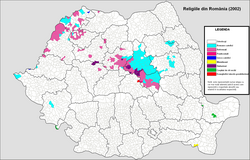The Gebeleizis Society
The "Gebeleizis Society" (Romanian: Societatea Gebeleizis), though far from being the only Zalmoxian group in Romania, has been the most studied formation. [6] It has 500 members split into 15 branches. [7] The core values of the organisation are expressed by its motto "One Family, One Nation, One Territory" (Romanian: O Familie, Un Neam, Un Teritoriu); [8] for the ideas promoted, the Gebeleizis Society has been subject of media scandal, and accused of extremism. [9]
Eastern Pagan Front
The Eastern Pagan Front (Romanian: Frontul Păgân de Răsărit), is a Romanian Zalmoxian group based in Bucharest, which's purpose consists "in the investigation, research and recovery of old traditions, of authentic Thracian-Dacian values, their knowledge and the raising of new generations of ethnic Romanians in the spirit of Zalmoxianism".
The group largely operated on Telegram, often posting paragraphs, photos, and more with an anti-Christian sentiment and a pro-Pagan perspective. They were at times recognized as a National-Socialist group, known for its pro-folkish outlook on Paganism.
As of late 2025, the group is no longer operational on the internet, with its Telegram and Youtube channels having been deleted by the group's owners. Despite the group no longer being active on the internet as a whole, it continues to maintain a physical presence and an archive of some of its posts in a founder's own Telegram channel. The group was mentioned by the Elie Wiesel National Institute for Studying the Holocaust in Romania in its "report of monitorization of Anti-Semitism and Holocaust denial in the electoral year 2024-2025".




